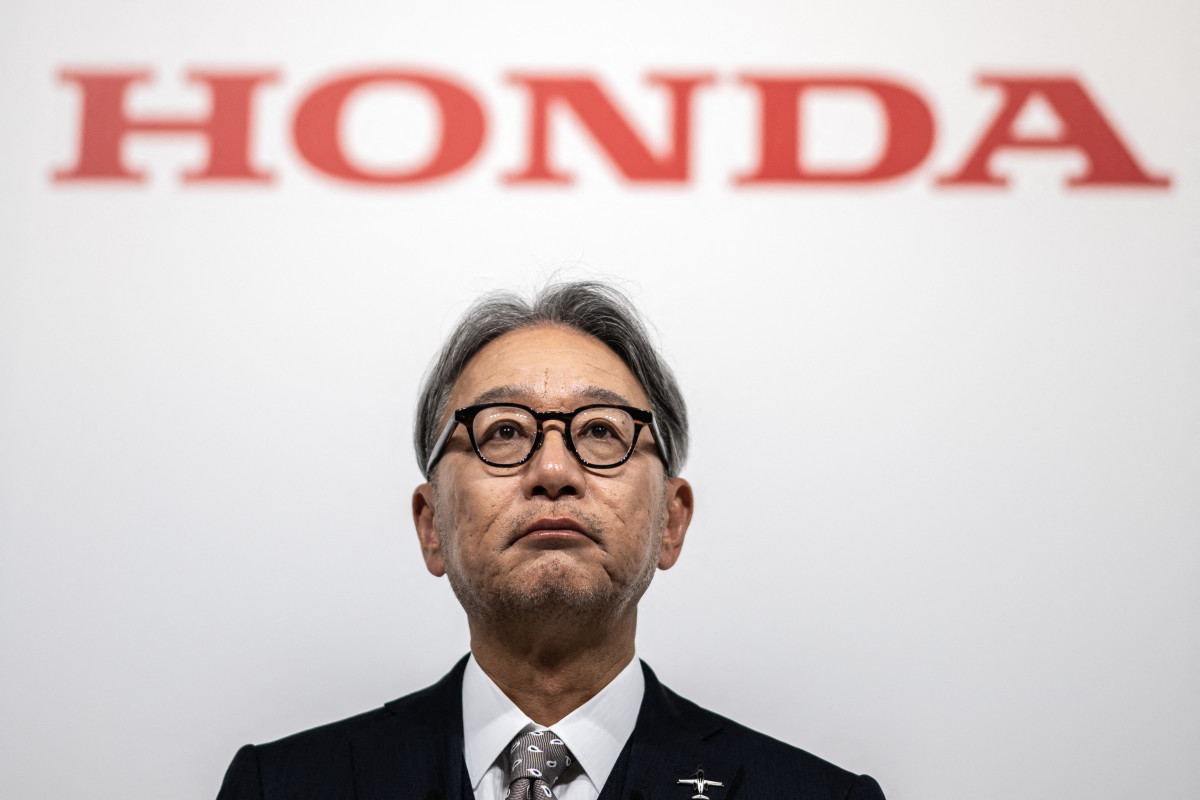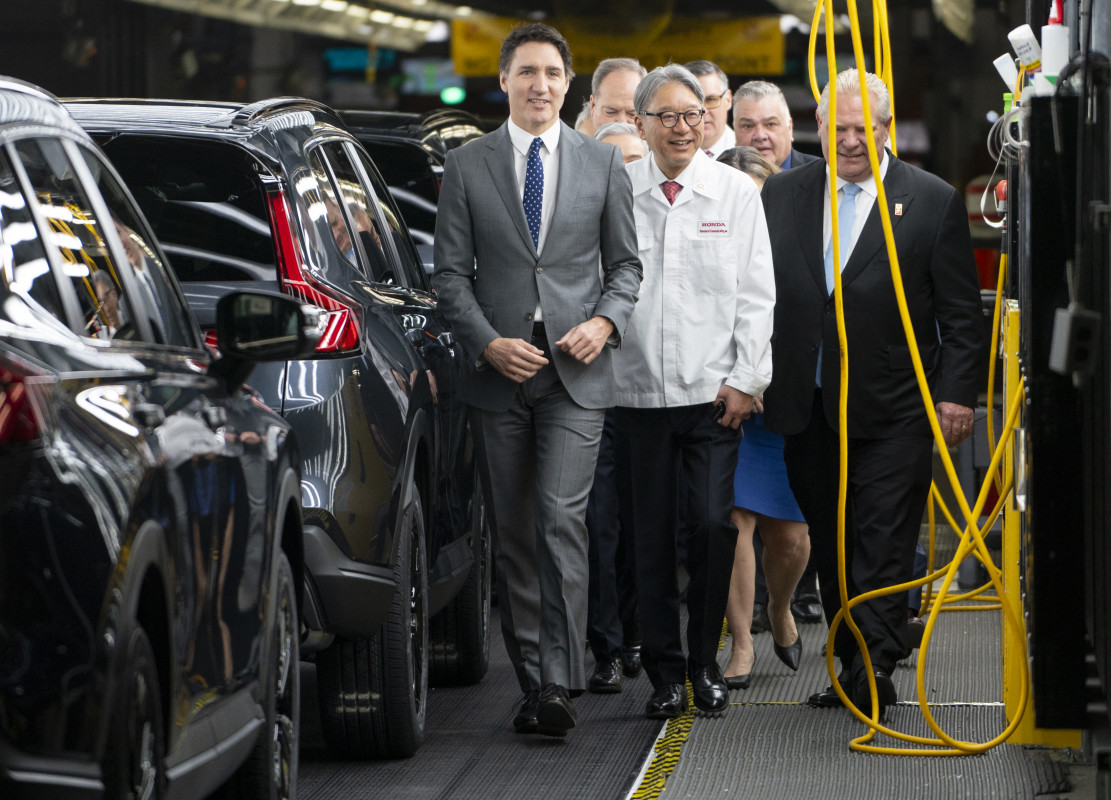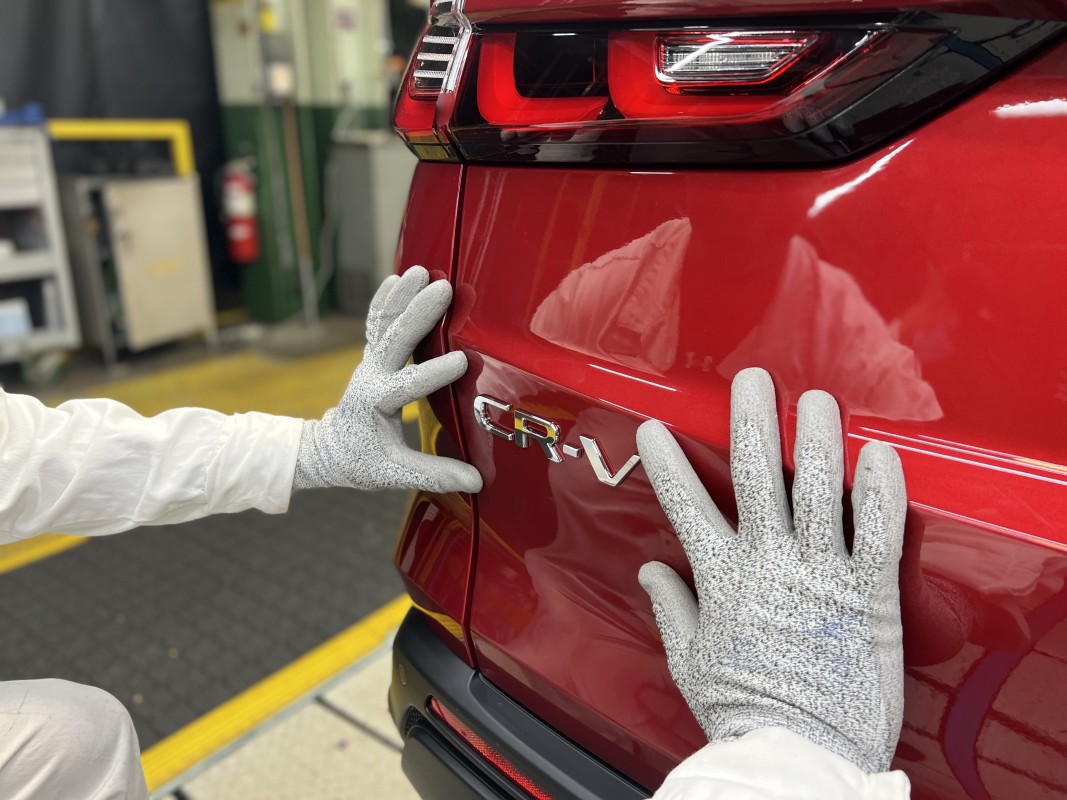Tariffs are expected to hit Honda especially hard
Japanese automaker Honda is warning that U.S. auto tariffs are expected to carve a “huge” hole in its operating profit within its current fiscal year, as it manages uncertainty stemming from the trade environment and slowing electric vehicle adoption.
During the announcement of its 2024-2025 fiscal year financial results on May 13, Honda CEO Toshihiro Mibe stated that in the current fiscal year, which began on April 1 and will end on March 31 next year, Honda expects the impact of the Trump Administration’s tariff policy to hammer 650 billion yen (~$4.34 billion) off its operating profits.

PHILIP FONG/AFP via Getty Images
For Honda, in particular, the tariffs are set to dent its key numbers. In addition to a drop in operating margin from 5.6% to a razor-thin 2.5%, it forecasts a 70% drop in net income by the end of its fiscal year and a 59% drop in year-over-year operating profit: from 1.21 trillion yen (~$8.08 billion) in the 2024-2025 fiscal year to just about 500.0 billion (~$3.34 billion) by March 31, 2026.
The Honda CEO noted that the multi-billion-dollar figure is the minimum impact of the tariffs. Mibe added that it includes other things that Honda makes, such as small-engined items like generators and motorcycles, in addition to cars and car parts. He also notes that the final amount depends on potential parts exemptions.
“This is the minimum tariff impact, but it will continue to change as time goes by,” he said.

PETER POWER/AFP via Getty Images
Sorry, Canada, EV manufacturers will have to wait
In addition to the news about the tariff impact, Honda also noted that it will suspend its multi-billion-dollar electric vehicle manufacturing infrastructure projects due to slowing growth in the EV market.
First announced at a press conference at Honda’s auto plant in Alliston, Ontario, Canada, on April 25, last year, Mibe, then-Canadian Prime Minister Justin Trudeau, and Ontario Premier Doug Ford announced that the Japanese brand will invest the equivalent of CAD$15 billion (~$11 billion) in establishing the country’s first “comprehensive electric vehicle supply chain” within the province of Ontario.
The massive project involved retooling an assembly plant for EV production, a new EV battery plant, and two key battery parts facilities that would supply them, all located within the province. The additions were poised to add 1,000 jobs to the existing 4,200 jobs at the assembly plant. Under the original plan, the plant was set to produce up to 240,000 vehicles per year when fully operational in 2028.
“The growth of the electric vehicle market has slowed more than initially expected, making it difficult to anticipate further progress,” Mibe said. “Therefore, we have decided to postpone large-scale investments in Canada.”
Honda’s Tariff Gambit
Honda, which sources about a third of its U.S. vehicles from plants in Mexico and Canada and a smaller volume from its native Japan, says it is preparing various countermeasures to cope with duties implemented by the Trump administration, including tweaks that would change which models are made at its Canadian and United States factories.

Honda
Honda supplements U.S. production of the CR-V crossover SUV, as well as sedan and hatchback versions of the compact Civic with units built at its Alliston, Ontario plant in Canada. In Mexico alone, Honda makes roughly 200,000 vehicles and ships about 160,000 of them to the U.S., including the Prologue EV and the popular HR-V compact crossover SUV.
Shortly after the 2024 U.S. Presidential election, Honda Chief Operating Officer Shinji Aoyama stated that the automaker may explore shifting production if permanent tariffs on imported vehicles were imposed during the Trump Administration, later stating during a February Honda earnings call that the company is prepared for any scenario.
“So at this moment, what we can do is to do something in the short term, which is about current production based on the current model mix and production in Mexico and Canadian factories,” he said. “We could reorganize the mix, product mix of the production as well there. This is something we can do short term. But in a mid-term perspective, we could change the allocation of the multiple mix in different ways. We are preparing for that, too.”
Final thoughts
Things could be worse. Mazda, a Japanese company that imported 235,738 vehicles from Japan to the U.S., or roughly 55% of its U.S. sales last year, recently stated that it couldn’t immediately give an earnings outlook for the 2025-2026 fiscal year because it needs more time to assess how tariffs might affect its operations.
I still maintain that Honda has an advantage that some of its other rivals do not have: an established manufacturing base in the United States. Honda was the first Japanese auto manufacturer to begin building cars in the United States, as the Marysville Auto Plant in Marysville, Ohio, began making cars on Nov. 1, 1982, and still makes Accords, Acura TLXs, and Acura Integras. Hopefully, for the sake of the U.S. auto market, the U.S. and Japan will work out a trade deal that benefits these companies.